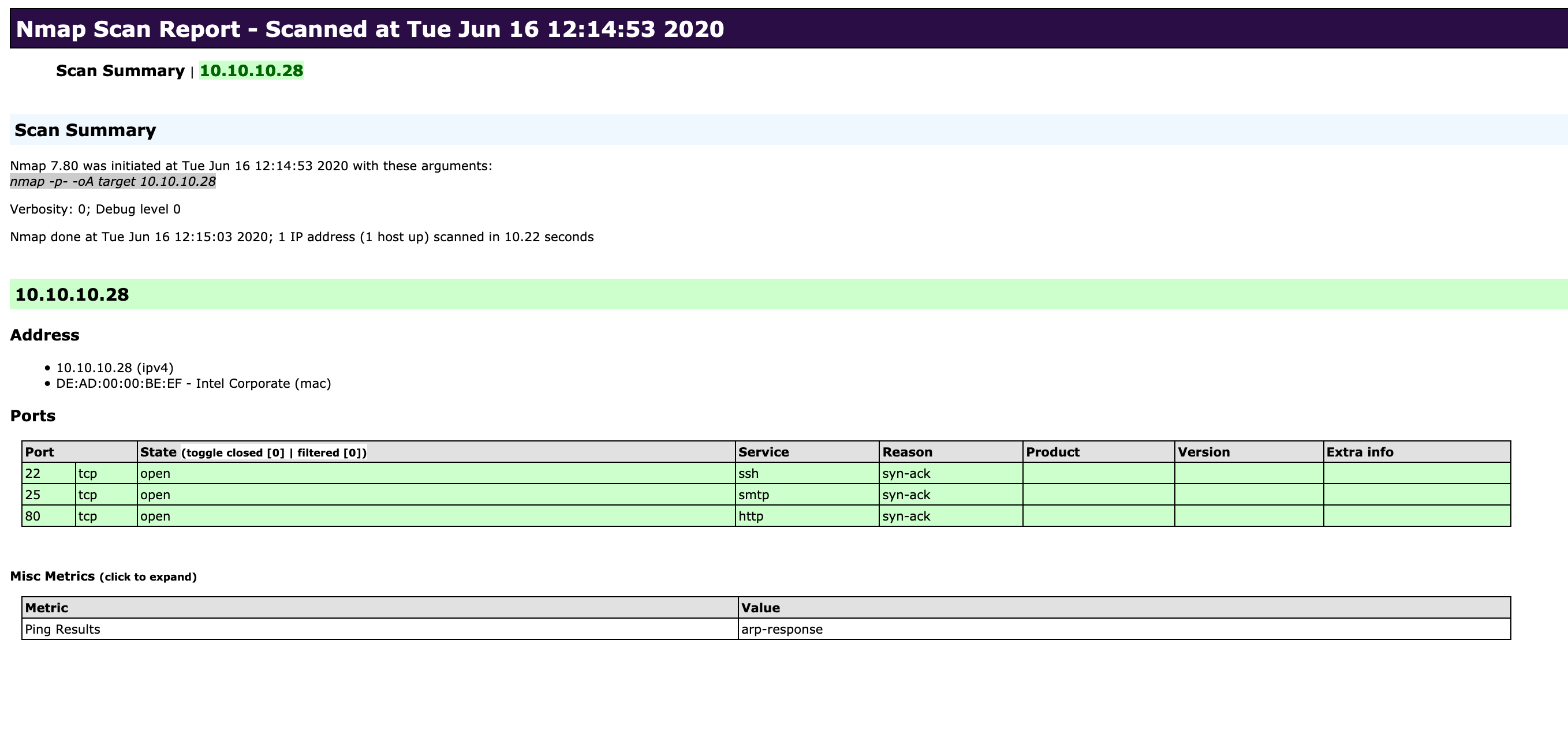Standard scans
- Most common and basic:
nmap -sC -T4 -p- HOST > sC.txt- Alternative:
ports=$(nmap -p- --min-rate=1000 -T4 10.10.10.10 | grep '^[0-9]' | cut -d '/' -f 1 | tr '\n' ',' | sed s/,$//)
nmap -p$ports -sC -sV 10.10.10.138ICMP
- The machine does not respond to ping:
nmap -sV -PS -sC -T4 -p- HOST > scan.txt TTL responses
Credits to Cronicasdeuninformatico

- Linux/Unix: 64
- Windows: 128
- MacOS: 64
- Solaris/AIX: 254
- FreeBSD: 64
Full link to all types of TTL → subinsb.com
HTB Cheatsheet
Scanning Options
| Nmap Option | Description |
|---|---|
10.10.10.0/24 | Target network range. |
-sn | Disables port scanning. |
-Pn | Disables ICMP Echo Requests |
-n | Disables DNS Resolution. |
-PE | Performs the ping scan by using ICMP Echo Requests against the target. |
--packet-trace | Shows all packets sent and received. |
--reason | Displays the reason for a specific result. |
--disable-arp-ping | Disables ARP Ping Requests. |
--top-ports=<num> | Scans the specified top ports that have been defined as most frequent. |
-p- | Scan all ports. |
-p22-110 | Scan all ports between 22 and 110. |
-p22,25 | Scans only the specified ports 22 and 25. |
-F | Scans top 100 ports. |
-sS | Performs an TCP SYN-Scan. |
-sA | Performs an TCP ACK-Scan. |
-sU | Performs an UDP Scan. |
-sV | Scans the discovered services for their versions. |
-sC | Perform a Script Scan with scripts that are categorized as “default”. |
--script <script> | Performs a Script Scan by using the specified scripts. |
-O | Performs an OS Detection Scan to determine the OS of the target. |
-A | Performs OS Detection, Service Detection, and traceroute scans. |
-D RND:5 | Sets the number of random Decoys that will be used to scan the target. |
-e | Specifies the network interface that is used for the scan. |
-S 10.10.10.200 | Specifies the source IP address for the scan. |
-g | Specifies the source port for the scan. |
--dns-server <ns> | DNS resolution is performed by using a specified name server. |
Output Options
| Nmap Option | Description |
|---|---|
-oA filename | Stores the results in all available formats starting with the name of “filename”. |
-oN filename | Stores the results in normal format with the name “filename”. |
-oG filename | Stores the results in “grepable” format with the name of “filename”. |
-oX filename | Stores the results in XML format with the name of “filename”. |
If we save it in .xml then we can create an html rom it like:
xsltproc scan.xml -o scan.html
Performance Options
| Nmap Option | Description |
|---|---|
--max-retries <num> | Sets the number of retries for scans of specific ports. |
--stats-every=5s | Displays scan’s status every 5 seconds. |
-v/-vv | Displays verbose output during the scan. |
--initial-rtt-timeout 50ms | Sets the specified time value as initial RTT timeout. |
--max-rtt-timeout 100ms | Sets the specified time value as maximum RTT timeout. |
--min-rate 300 | Sets the number of packets that will be sent simultaneously. |
-T <0-5> | Specifies the specific timing template. |
